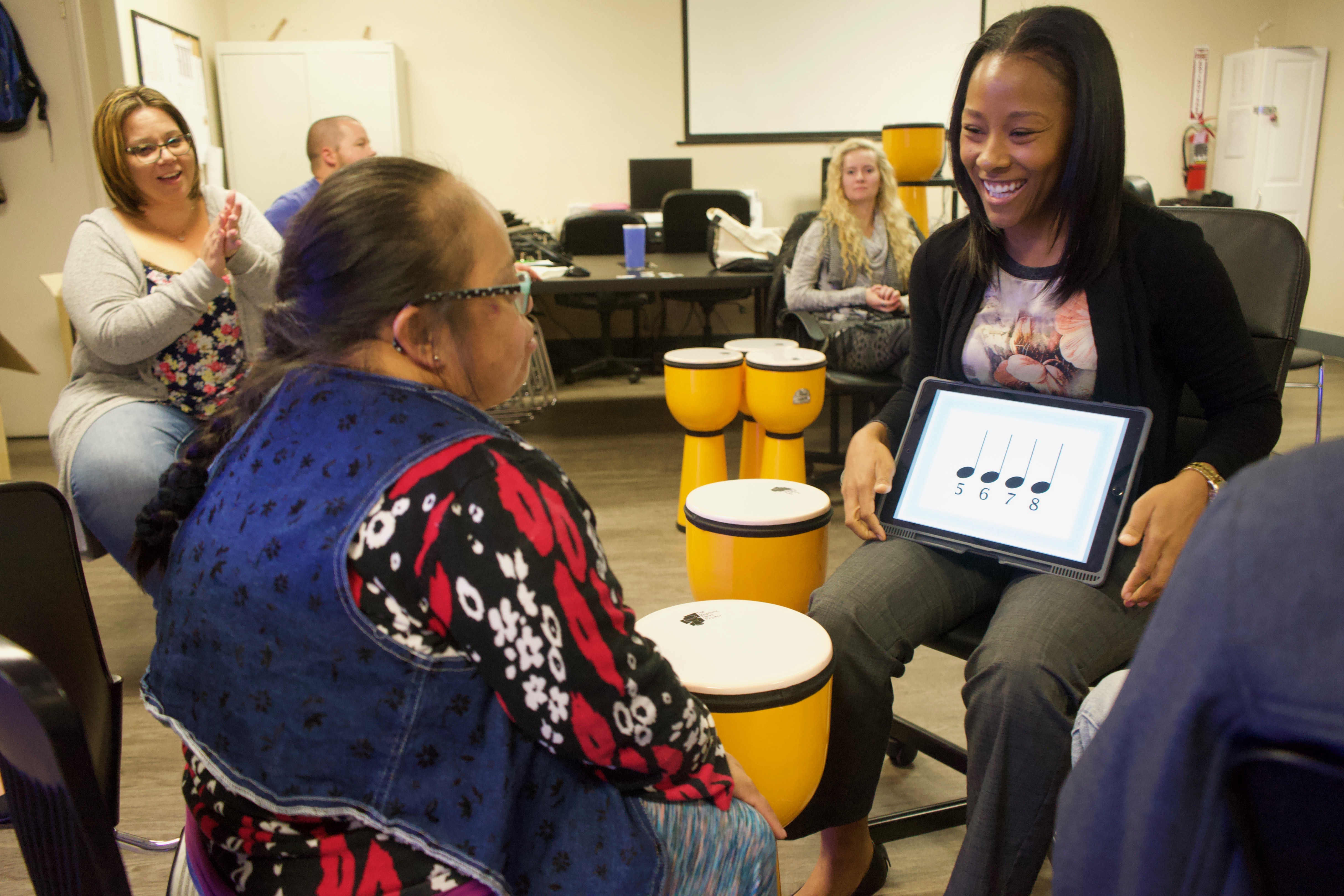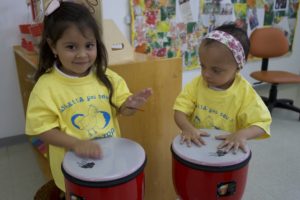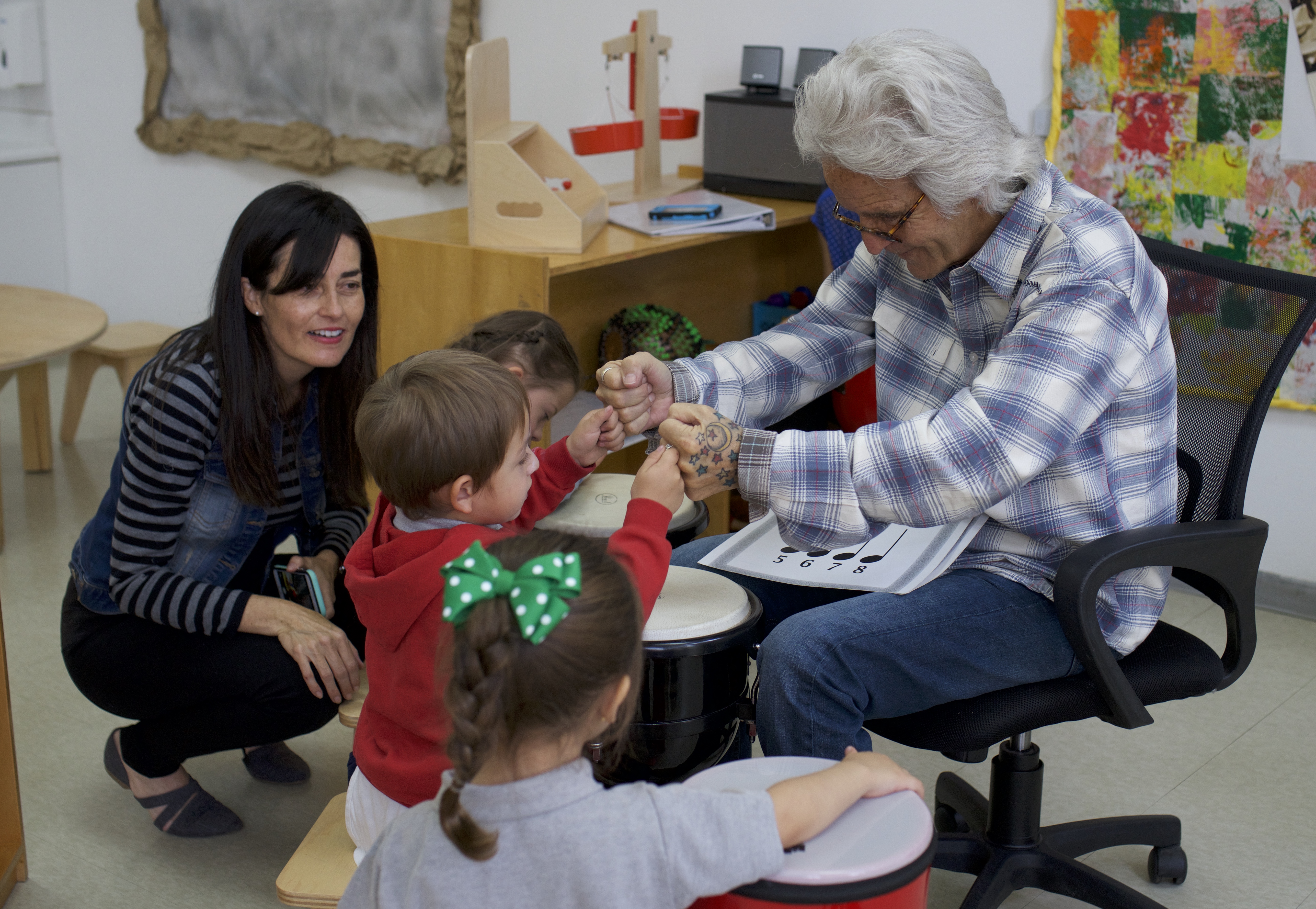SKILLS ADDRESSED
The TRAP program has been successful in addressing cognitive, emotional, and physical disabilities. Through customized exercises, the program teaches and enhances skills such as:
- Focus
- Memory
- Socialization
- Sequencing
- Sign Language
- Laterality
- Motor control
- Spatial Awareness
- Communication
MULTI-SENSORY APPROACH
Each lesson combines four senses
- Visual – you see the lesson
- Tactile – you feel the instrument
- Auditory – you hear the lesson read out loud
- Speech – you speak the lesson
HOW IT WORKS
The Students:
The TRAP curriculum was created specifically as a learning resource for individuals with Intellectual Differences as well as their typical peers.
The Teachers:
The TRAP class is typically instructed by a teacher,support staff, or other facilitator including parents who have received training.
The Curriculum:
The TRAP curriculum has dozens of lessons at various ability levels. The curriculum can be customized based on those levels and goals.
Lessons include:
- Counting
- Colors
- Sequencing
- Arithmetic
- Reading
- Writing
- Shapes
- and much more!
The program package includes the curriculum book/ebook, instruments, and training. Once the package is purchased and the facilitators are trained, the organization or home, is free to use and adapt the program as it applies to their specific needs.

TRAP Philosophy
Group teaching occurs in an environment that is supportive, cooperative and fun, and members naturally develop confidence and a positive self-image. The behavioral process is one of the most significant aspects of The Rhythmic Arts Project. Our main purpose is to have fun and to learn in the process. However, it is important to keep in mind that learning requires high expectations, structure, and reinforcement.
Our students are all unique in their strengths and weaknesses. No matter what an individual’s ability level, we expect them to actively take part in a class. Those who are able to understand and perform the more advanced concepts can become model ‘teachers’ or ‘aides’ during a particular activity. Not everyone will fully engage in all the exercises. Some of our students may not have full use of their hands to grasp or the full range of motion to strike a drum. In this case, adapted equipment is used if possible or we can play the instrument or voice the responses for them, everybody participates. It is important to remember not to get discouraged if active participation does not occur immediately. The most important thing is to always expect more from your students; never tell us what they can’t do, concentrate on what they can.

The Rhythmic Arts Project lessons include hundreds of ideas compiled over nearly 26 years with therapists, doctors, teachers, administrators and experts in the field of Intellectual and Developmental Disabilities as well as their typical peers. The methodology is simplistic when followed chronologically and with guidance. The curriculum shows us how TRAP makes learning fun!
Eddie Tuduri,
CEO/Founder
The Rhythmic Arts Project is a non-profit 501(C)(3) company. We honor and celebrate diversity, regardless of disability, religion, race, creed or ethnicity.

